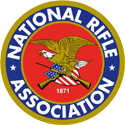Join Now to engage in our Firearms Friendly Community with now thousands of Firearms Friendly Members In Dozens of Firearms Friendly Groups!
Lets looks at what we’ve lost so far to come up with a list that we can all agree on to take back first and how to do it.
Time.com – A Timeline of the Major Gun Control Laws in America.
1791
On Dec. 15, 1791, ten amendments to the U.S. Constitution — eventually known as the Bill of Rights — were ratified. The second of them said: “A well regulated Militia, being necessary to the security of a free State, the right of the people to keep and bear Arms, shall not be infringed.”
1934
The first piece of national gun control legislation was passed on June 26, 1934. The National Firearms Act (NFA) — part of President Franklin Delano Roosevelt’s “New Deal for Crime“— was meant to curtail “gangland crimes of that era such as the St. Valentine’s Day Massacre.”
The NFA imposed a tax on the manufacturing, selling, and transporting of firearms listed in the law, among them short-barrel shotguns and rifles, machine guns, firearm mufflers and silencers. Due to constitutional flaws, the NFA was modified several times. The $200 tax, which was high for the era, was put in place to curtail the transfer of these weapons.
1938
The Federal Firearms Act (FFA) of 1938 required gun manufacturers, importers, and dealers to obtain a federal firearms license. It also defined a group of people, including convicted felons, who could not purchase guns, and mandated that gun sellers keep customer records. The FFA was repealed in 1968 by the Gun Control Act (GCA), though many of its provisions were reenacted by the GCA.
1939
In 1939 the U.S. Supreme Court heard the case United States v. Miller, ruling that through the National Firearms Act of 1934, Congress could regulate the interstate selling of a short barrel shotgun. The court stated that there was no evidence that a sawed off shotgun “has some reasonable relationship to the preservation or efficiency of a well regulated militia,” and thus “we cannot say that the Second Amendment guarantees the right to keep and bear such an instrument.”
1968
Following the assassinations of President John F. Kennedy, Attorney General and U.S. Senator Robert F. Kennedy and Dr. Martin Luther King, Jr., President Lyndon B. Johnson pushed for the passage of the Gun Control Act of 1968. The GCA repealed and replaced the FFA, updated Title II of the NFA to fix constitutional issues, added language about “destructive devices” (such as bombs, mines and grenades) and expanded the definition of “machine gun.”
Overall the bill banned importing guns that have “no sporting purpose,” imposed age restrictions for the purchase of handguns (gun owners had to be 21), prohibited felons, the mentally ill, and others from purchasing guns, required that all manufactured or imported guns have a serial number, and according to the ATF, imposed “stricter licensing and regulation on the firearms industry.”
1986
In 1986 the Firearm Owners Protection Act was passed by Congress. The law mainly enacted protections for gun owners — prohibiting a national registry of dealer records, limiting ATF inspections to once per year (unless there are multiple infractions), softening what is defined as “engaging in the business” of selling firearms, and allowing licensed dealers to sell firearms at “gun shows” in their state. It also loosened regulations on the sale and transfer of ammunition. The bill also codified some gun control measures, including expanding the GCA to prohibit civilian ownership or transfer of machine guns made after May 19, 1986, and redefining “silencer” to include parts intended to make silencers.
1993
The Brady Handgun Violence Prevention Act of 1993 is named after White House press secretary James Brady, who was permanently disabled from an injury suffered during an attempt to assassinate President Ronald Reagan. (Brady died in 2014). It was signed into law by President Bill Clinton. The law, which amends the GCA, requires that background checks be completed before a gun is purchased from a licensed dealer, manufacturer or importer. It established the National Instant Criminal Background Check System (NICS), which is maintained by the FBI.
1994
Tucked into the sweeping and controversial Violent Crime Control and Law Enforcement Act, signed by President Clinton in 1994, is the subsection titled Public Safety and Recreational Firearms Use Protection Act. This is known as the assault weapons ban — a temporary prohibition in effect from September of 1994 to September of 2004. Multiple attempts to renew the ban have failed.
The provisions of the bill outlawed the ability to “manufacture, transfer, or possess a semiautomatic assault weapon,” unless it was “lawfully possessed under Federal law on the date of the enactment of this subsection.” Nineteen military-style or “copy-cat” assault weapons—including AR-15s, TEC-9s, MAC-10s, etc.—could not be manufactured or sold. It also banned “certain high-capacity ammunition magazines of more than ten rounds,” according to a U.S. Department of Justice Fact Sheet.
2003
The Tiahrt Amendment, proposed by Todd Tiahrt (R-Kan.), prohibited the ATF from publicly releasing data showing where criminals purchased their firearms and stipulated that only law enforcement officers or prosecutors could access such information.
“The law effectively shields retailers from lawsuits, academic study and public scrutiny,” The Washington Post wrote in 2010. “It also keeps the spotlight off the relationship between rogue gun dealers and the black market in firearms.”
There have been efforts to repeal this amendment.
2005
In 2005, the Protection of Lawful Commerce in Arms Act was signed by President George W. Bush to prevent gun manufacturers from being named in federal or state civil suits by those who were victims of crimes involving guns made by that company. The first provision of this law is “to prohibit causes of action against manufacturers, distributors, dealers, and importers of firearms or ammunition products, and their trade associations, for the harm solely caused by the criminal or unlawful misuse of firearm products or ammunition products by others when the product functioned as designed and intended.” It also dismissed pending cases on October 26, 2005.
2008
District of Columbia v. Heller essentially changed a nearly 70-year precedent set by Miller in 1939. While the Miller ruling focused on the “well regulated militia” portion of the Second Amendment (known as the “collective rights theory” and referring to a state’s right to defend itself), Heller focused on the “individual right to possess a firearm unconnected with service in a militia.”
Heller challenged the constitutionality of a 32-year-old handgun ban in Washington, D.C., and found, “The handgun ban and the trigger-lock requirement (as applied to self-defense) violate the Second Amendment.”
It did not however nullify other gun control provisions. “The Court’s opinion should not be taken to cast doubt on longstanding prohibitions on the possession of firearms by felons and the mentally ill, or laws forbidding the carrying of firearms in sensitive places such as schools and government buildings, or laws imposing conditions and qualifications on the commercial sale of arms,” stated the ruling.
Source: https://time.com/5169210/us-gun-control-laws-history-timeline/






React, Comment & Share
how many times our politicians, sworn to preserve and defend the
Constitution, instead have tried to undermine or destroy it.
Politicians who would steal our constitutionally guaranteed right to arms
betray their oath, their Constitution, their nation, and their people.
They are thieves – more despicable than any common thief of mere money or
property, for what they steal is irreplaceable, beyond value, and belongs
not merely to today’s Americans, but all our future generations.
- Lt. Col. Fielding Lewis Greaves, U.S. Army, Retired